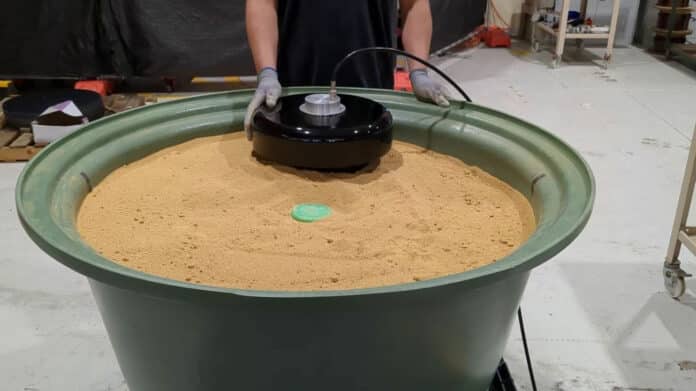Landmines and other explosive remnants of war are a global humanitarian crisis, with over 100 million landmines deployed in more than 60 countries, causing around 6,500 casualties each year.
Now, scientists at Australia’s national science agency CSIRO have developed a new landmine detection technology that could soon help landmine-affected countries with their demining efforts.
CSIRO and corporate advisor RFC Ambrian have jointly established a new Australian company, MRead, to turn this technology into hand-held detectors that more quickly, accurately, and cost-effectively detect landmines for clearing.
CSIRO Chief Executive Larry Marshall said, “The precision of this technology will be a game-changer for landmine-clearing efforts, delivering a solution that is faster and more reliable than current detectors, which in turn protects the people doing the clearing and expands the range of clearing efforts to make the world a safer place.”
CSIRO developed magnetic resonance technology that detects the molecular signature of explosives used in landmines. MRead’s hand-held devices avoid the white noise of metal objects such as bottle caps and shrapnel, which slows down the current metal detection and clearance process.
Magnetic Resonance (MR) is a form of radio frequency (RF) spectroscopy that can be used for quantitative measurement of target elements in crystalline compounds. In the MR technique, the resonance at a particular radio frequency for the element is highly discriminating for that compound, as it is extremely rare for one resonance to overlap another.
Pulses of radio frequency fields are applied using non-contact sensors where the frequency of the field is set to a particular compound’s resonance. The process of excitation and detection is typically completed in milliseconds. However, it is usual to average a number of individual measurements such that the detected signal (echo) has an improved signal-to-noise ratio. The magnitude of the echo is proportional to the number of crystalline unit cells of the target mineral.
In the detection of explosives and drugs, MR measurements are usually detecting the presence of elements such as N, K, and Cl, where the resonance frequency is highly specific to the particular drug or explosive being targeted.
“The magnetic resonance landmine detection technology will have a profound impact on areas recovering from and currently experiencing hardship and danger from uncleared minefields,” said John Shanahan, Retired Brigadier and Managing Director of MRead. “These enduring explosive remnants of war inhibit freedom of movement and limit access to food, water, schools, hospitals, and shelter, which jeopardizes the safe recovery and return of civilian populations. MRead is excited to bring this game-changing technology into the market to speed up the process of clearing minefields, improve confidence in detection and bring down the cost of demining.”
A nonprofit group, The HALO Trust, will be the first client to use the device. The startup plans to deploy its first hand-held detectors with the HALO Trust to landmine-affected regions in Southeast Asia in 2024.
